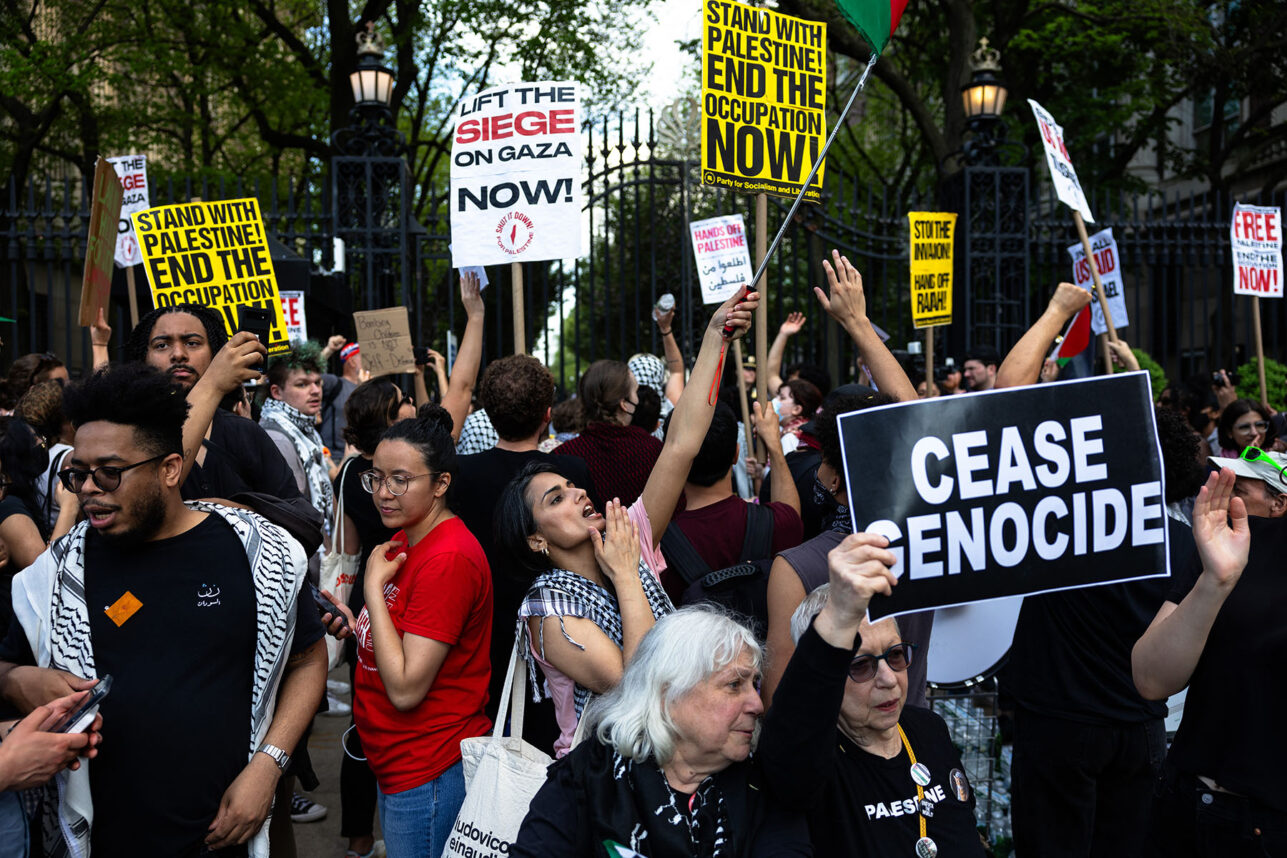Should the Conference of Presidents of Major American Jewish Organizations be reformed? The short answer is yes. If there’s a way to make the conference a better institution, the member organizations should do it. If there’s a way to reform any organization and make it a better institution, the organization should do it. So, the question is really twofold:
1. What is the problem that that needs to be solved?
2. Do we have a way of solving the problem that would improve the overall function of the organization?
Let’s begin with question number 1: What exactly is the problem with the Conference?
Not accepting J Street
Obviously, the recent manifestation of the problem was the controversial vote on J Street’s participation in the organization. Some people – good people – believe that the failure to accept J Street as a member of the group is a testament to the Conference’s unrepresentative character. But as Ami Eden, in his level-headed review of the vote’s fallout, wrote: “with or without J Street, J Street’s views are represented in the Conference of Presidents and the Conference of Presidents continues to serve as the most diverse and reflective platform in the Jewish organizational world”.
If the Conference is representative or not is a question that I will soon address, but not accepting J Street doesn’t prove much one way or the other. J Street was not accepted to the group not because of its views but rather because – again, referencing Eden, but also my own piece from before the vote – it has a way of getting under other people’s skin. J Street is proudly contrarian, and it has been quite blunt in attacking not just policies it dislikes, but also the Jewish American “establishment”. Apparently, the establishment has feelings. Views similar to the ones of J Street are well represented within the Conference, by organizations that did not build their reputations on attacking other Jewish organizations.
Bottom line: not accepting J Street is not proof that the Conference is not representative of Jewish views.
Who gets to vote?
A majority of Jews would have supported J Street’s participation, said rabbi Julie Schonfeld of the Rabbinical Assembly. “A vast majority of American Jews, particularly younger American Jews, recognize that we fall squarely within the pro-Israel tent's walls”, wrote Talia Benamy of J Street. There is a good chance that she is right in making this assessment, although I’ve yet to see proof of that. Her complaint is another representation of the claim that the Conference is “out of touch”. My question still is – out of touch with whom?
In other words: the question of representation and the one of “being in touch” has to be preceded by another question: whom should the Conference represent? A majority of “American Jews”? And what definition of “Jews”? A majority of American Jews with ties to organizations? A majority of active Jews?
This isn’t an easy question to answer: if you give an equal vote to the highly active and engaged Jew and to the inactive and detached Jew, you also get a vote that is “unrepresentative”. It will be unrepresentative of the views of those who care – the “engaged” part of the community. In a state, one is forced to pay taxes, and gets to vote, so maybe Jewish organizations should also count only the votes of those who pay their dues?
And pay what dues? And to whom?
Small ones, big ones
One of the main complaints against the Conference refers to the fact, as rabbi Rick Jacobs of the Union for Reform Judaism argued, that it “is captive of a large number of small organizations that do not represent the diversity of views in our community”. For the URJ, a large organization, such a situation is understandably annoying. That larger organizations want more influence is natural, and that smaller organizations resist the attempt of larger ones to take over is also natural. Of course, this goes back to the question of representation and the criteria defining the community that is, or should be, represented by the Conference. Larger organizations claim that the numbers matter; smaller organizations might want to use different criteria. For example: the intensity of engagement, or the amount of dues paid, or the level of caring about the issues.
And even if the number of members is the ultimate criterion, should it not be a number based on a similar nature? In other words: you can’t compare the number of members of an organization in which membership means an annual donation of $10 to the number of members of an organization to which one has to donate $100 annually. You can’t – or at least it isn’t obvious that you can – compare membership in an organization that means a once-a-year appearance at a gathering place, to a membership that means once-a-day or once-a-week participation in organizational activity.
So what is the problem?
To conclude this part of the article: the problem doesn’t directly concern specific views. The problem is that the Conference is currently structured in a way that gives smaller groups more power than the share they actually have in the Jewish American community – a balance of power that is no longer acceptable to some of the main groups of the organization.
So now we can turn to the second question: Do we have a way of solving the problem that would improve the overall function of the organization?
Being representative
As we’ve already mentioned, prior to any discussion of proper representation, there is a need to define the community that the Conference might want to represent.
Let’s consider the following three options:
A. It wants to represent all American Jews.
B. It wants to represent all organized Jews.
C. It wants to represent all Jews that have interest in being represented.
All three options have advantages and disadvantages.
Representing “all Jews” gives equal voice to the people with a low level of engagement and little interest – and that is both unfair and discouraging for those who are highly engaged.
Representing organized Jews only gives power to the established Jewish community over its less organized but not necessarily unengaged parts. It gives a voice to those who can pay dues and doesn’t give as much voice to those who can’t – young Jews, less wealthy Jews, immigrants etc. It also exposes the Conference to further allegations that it is unrepresentative of “all Jews”.
Representing those who have interest in being represented sounds good but raises many questions: What do we count as having “interest”? You can set a very low bar – if a Jew didn’t say “no” this means he wants to be represented – or a slightly higher bar – all a Jew needs to do it say yes (maybe by signing a document) – or an even higher one – a Jew has to do something, pay or act, to prove his “interest”.
Of course, each course leads to a different outcome. Each course means a community that is different and a Conference that is representative of something else. Naturally, the organizational interest is to be able to make the claim that it represents as many Jews as possible. But it also has an interest not to be watered down to the point of insignificance and an inability to take any action as it strives to be “representative” of the largest possible community.
Not values, interests
I will attempt not to be too cynical about this, just sober enough to acknowledge a simple fact: the battle over the nature of the Conference is an organizational power struggle, not much more. Larger organizations want more power to the people, because the people are on their side, smaller organizations want more power to the highly engaged because that is their strength. This isn’t a debate about values or morality – this is Jewish politics.
Of course, Jewish politics in the American context is particularly complicated because it is voluntary. Thus, no one is compelled to participate. Everyone is free to leave. Rocking the boat can easily destroy it.
Options for reform
Making the Conference more representative of the larger organizations can work under the following conditions:
A. If smaller organizations and highly engaged segments of the community still have reason enough to stay.
B. If the “tent” is still coherent enough for the organization to remain functional.
So let’s consider some of the options for reform (Nathan Guttman mentions a couple of them in his report, and there are more):
1. Cancel the ‘one organization, one vote policy’, and replace it with a policy of proportional representation. This means that the Conference would move from being a Senate-like organization to being a House-like organization.
Advantages: The Conference will more accurately represent more Jews, and will more accurately reflect the strength of Jewish organizations.
Problems: It still doesn’t solve the “representation” problem since it doesn’t give voice to the unorganized Jews; it gives more voice to Jews based on organizational affiliation rather than by the level of engagement; the playing-field wouldn’t be leveled as membership in different organizations has different meaning.
2. Have a “United Nations” model, in which all organizations retain their one vote but an executive committee of the larger organization will have more power to make decisions (General Assembly vs. Security Council).
Advantages: It could be a way of maintaining a balance that would make it still worthy enough for small organizations to participate while giving more voice to those who have more members.
Problems: Again, why count members and not dues or level of engagement? What are the decisions that the committee would make, what are the ones that would require a vote of all participants?
3. Have a Senate-House model, with some decisions that require a majority of both the organizations and the “Jews” they represent.
Advantages: American Jews are familiar with the concept and may accept it; the compromise gives extra power based on numbers, but doesn’t disenfranchise the smaller members.
Problems: Look at Congress – this could be a recipe for deadlock and inaction.
4. Have some kind of “elections” for the Conference, by holding a vote, by signing documents, or by charging a small fee.
Advantages: This would make the organization truly “representative” of those who want to be represented; it would test the desire of different segments to actually participate and engage in the process.
Problems: It would weaken the member organizations, so they are not likely to agree to such a suggestion (remember, this is all about organizational politics); the Conference is still not going to be representative of the views of the community – because the highly engaged are likely to get a higher percentage of the representation in the process.
So what should be done?
Is “nothing” an option?
It actually might be the best of all currently available options, but let’s assume it is not acceptable for too many important participants. Let’s also make another assumption: the fact that J Street was not accepted is no reason to destroy the umbrella organization of the Jewish community. If we take both those assumptions into account the reasonable conclusion would be a moderate path for reform along the following guidelines:
1. Make communal unity a priority.
2. Make the organization more representative of more Jews.
3. Make sure to have a structure that still gives extra influence to the highly engaged Jews.
4. Make the organization more representative of those who want to be represented by it.
5. Have a big tent that is still small and cohesive enough to be functional.
6. Don’t let any one organization dictate anything to other members of the organization by threatening to leave.
7. Reestablish the fact that not all organizations are going to be satisfied with every detail of the structure or every decision of the Conference.
8. Strive to keep “Israel” as a unifying purpose, rather than making it a point of intentional contention.























 More news and opinions than at a Shabbat dinner, right in your inbox.
More news and opinions than at a Shabbat dinner, right in your inbox.